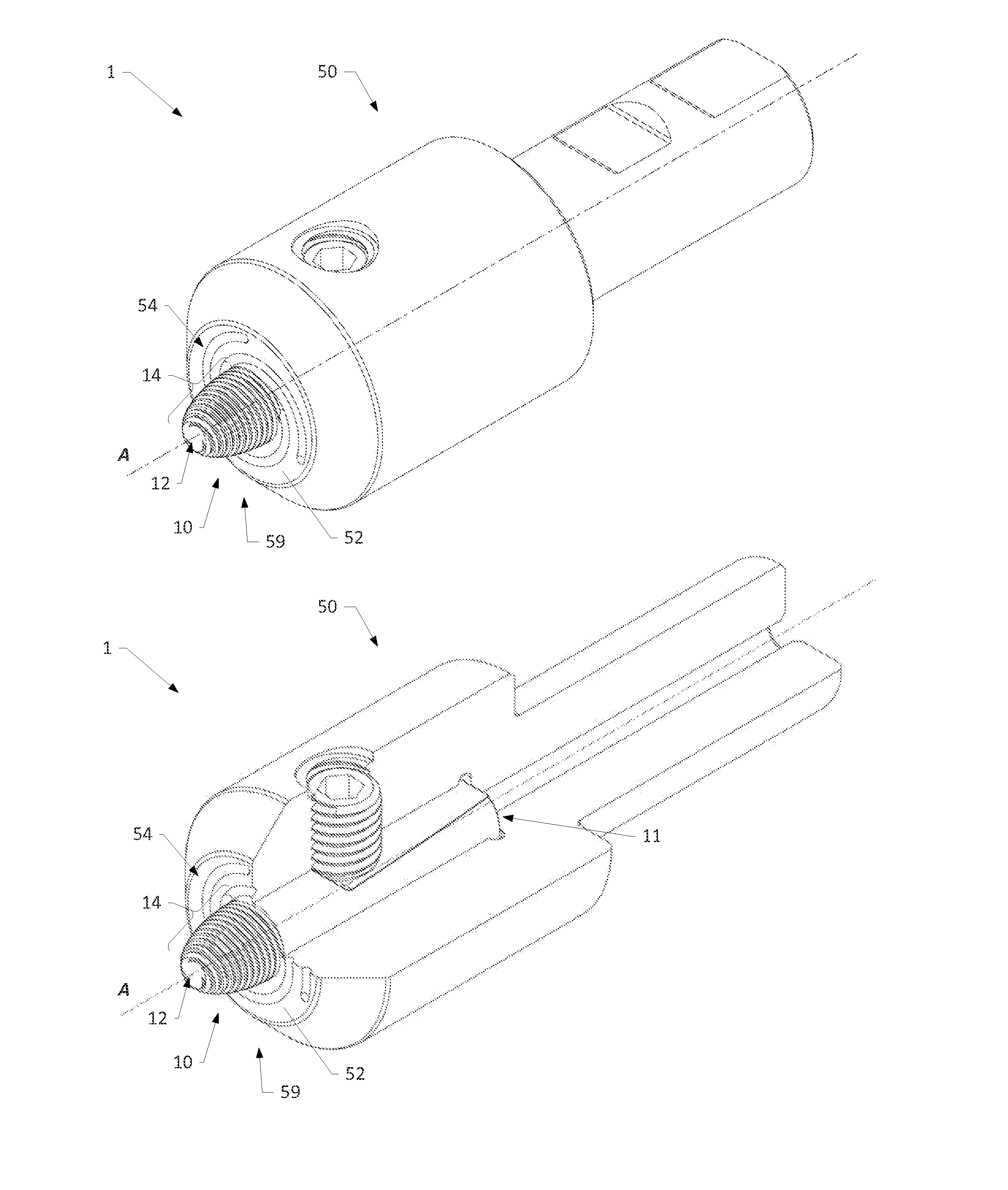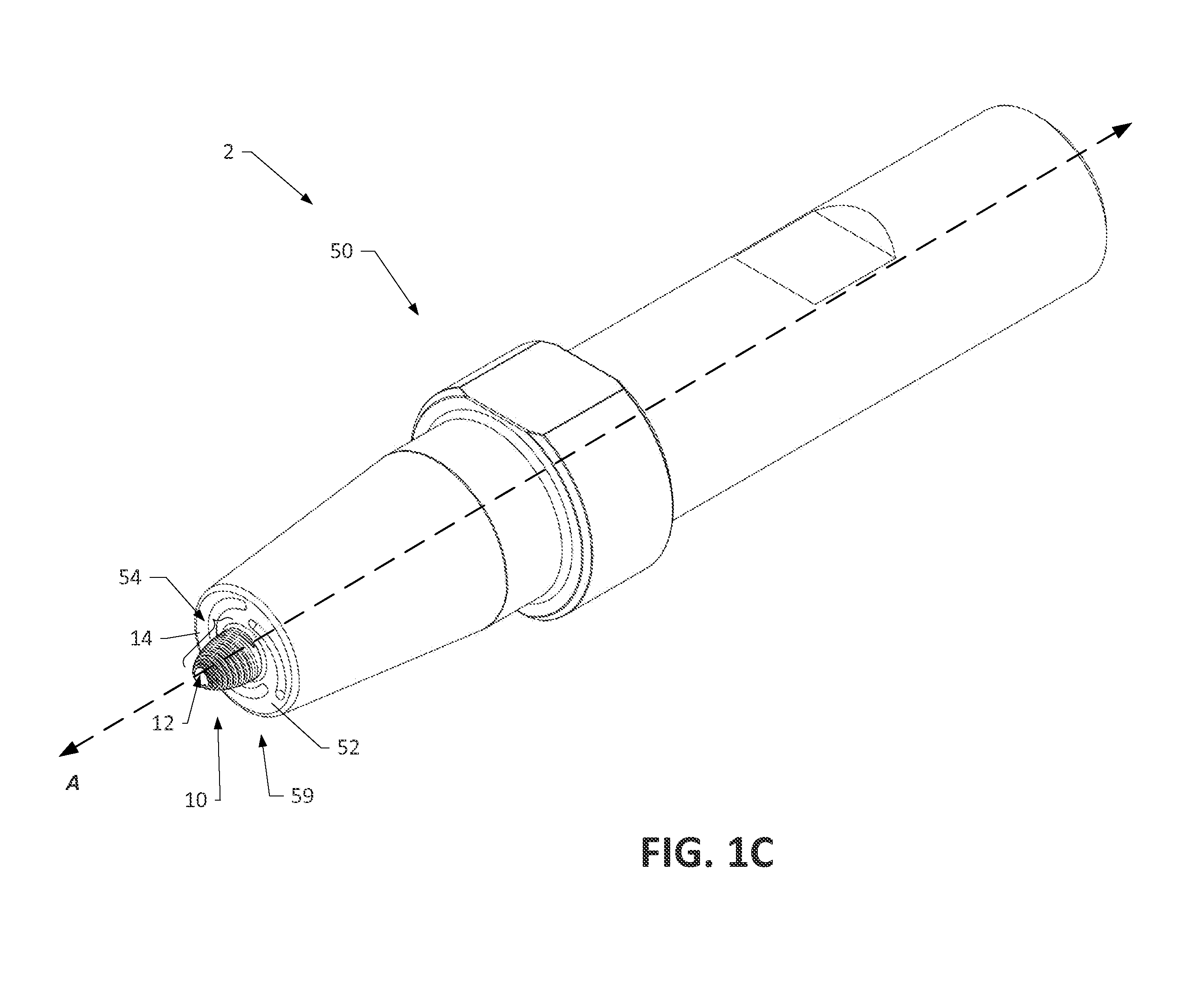Controlled speed friction stir tool probe bodies having non-linear, continuous, monotonically-decreasing curved axial profiles and integrated surface features
a technology of friction stir and probe body, which is applied in the direction of manufacturing tools, soldering devices, auxillary welding devices, etc., can solve the problems of reducing the amplitude of side-to-side oscillation of the tool, and affecting the amplitude of side-to-side oscillation
- Summary
- Abstract
- Description
- Claims
- Application Information
AI Technical Summary
Benefits of technology
Problems solved by technology
Method used
Image
Examples
Embodiment Construction
[0049]The present disclosure will now be described more fully hereinafter with reference to exemplary aspects thereof. These exemplary aspects are described so that this disclosure will be thorough and complete, and will fully convey the scope of the disclosure to those skilled in the art. Indeed, the disclosure may be expressed in many different forms and should not be construed as limited to the aspects set forth herein; rather, these aspects are provided so that this disclosure will satisfy applicable legal requirements. As used in the specification, and in the appended claims, the singular forms “a”, “an”, “the”, include plural referents unless the context clearly dictates otherwise.
[0050]Various aspects of the present disclosure generally relate to a friction stir processing tool configured to be used in friction stir welding (FSW), friction stir spot welding (FSSW), and / or friction stir processing (FSP) of malleable materials, such as non-ferrous metals and related alloys. FIG...
PUM
| Property | Measurement | Unit |
|---|---|---|
| Flow rate | aaaaa | aaaaa |
| Speed | aaaaa | aaaaa |
| Surface | aaaaa | aaaaa |
Abstract
Description
Claims
Application Information
 Login to View More
Login to View More - R&D
- Intellectual Property
- Life Sciences
- Materials
- Tech Scout
- Unparalleled Data Quality
- Higher Quality Content
- 60% Fewer Hallucinations
Browse by: Latest US Patents, China's latest patents, Technical Efficacy Thesaurus, Application Domain, Technology Topic, Popular Technical Reports.
© 2025 PatSnap. All rights reserved.Legal|Privacy policy|Modern Slavery Act Transparency Statement|Sitemap|About US| Contact US: help@patsnap.com



